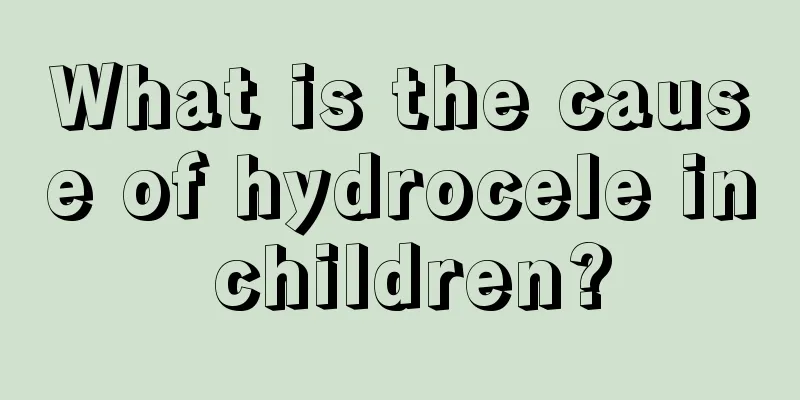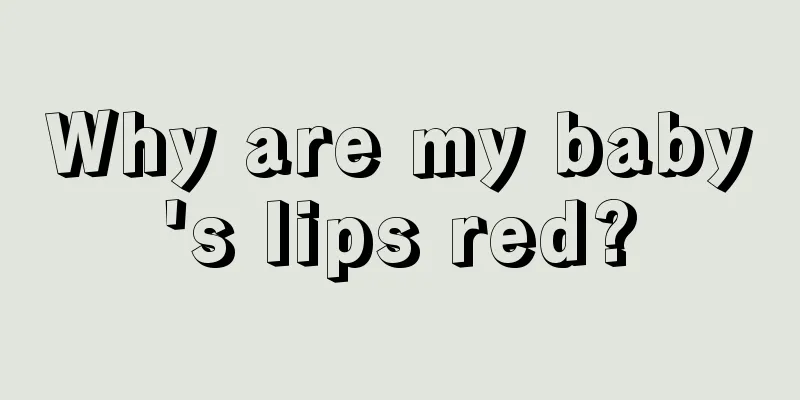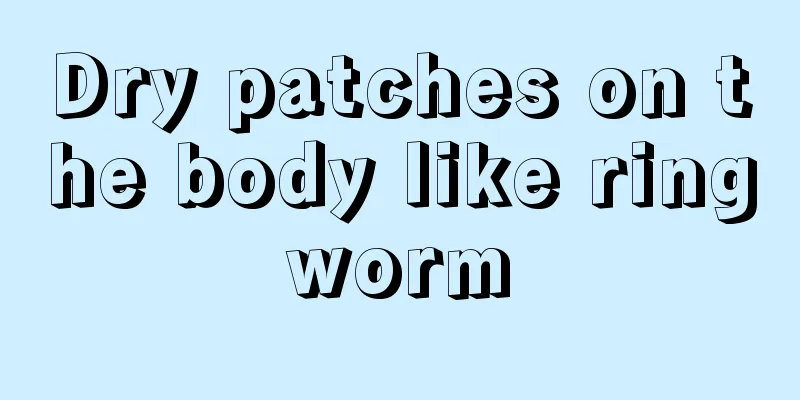What to do if your baby's tear duct is blocked

|
Blocked tear ducts in infants is a common phenomenon in our lives, but sometimes it is not easy for us to detect. Sometimes many parents may find that their children shed tears when they are not crying, or sometimes they cry without tears. Due to lack of experience, many parents do not know the reason. In fact, this is a symptom of blocked tear ducts in infants. For the health of the child, such symptoms must be adjusted in time. Let’s learn about what to do if the baby’s tear duct is blocked. What to do if your baby's tear duct is blocked The tear ducts of infants are still in the development stage within 6 months, so conservative treatment can be adopted first. Generally, antibiotic eye drops are used locally, combined with massage of the skin at the greater corner of the eye (tear sac) to promote the flow of tears toward the nasolacrimal duct. This is done 2 to 3 times a day. For more severe cases, the number can be increased to 4 to 6 times, each time for 1 minute. After a period of treatment, the membrane will rupture on its own and the tear duct will be unobstructed. If the symptoms do not improve after a period of time, you can go to the hospital for pressurized flushing of the tear duct to break the membrane. If the above two methods are ineffective, the tear duct probing can be used to puncture the membrane with a probe to make the tear duct unobstructed. However, if the tear duct is blocked due to bony stenosis or nasal deformity, surgery or other methods should be considered to clear the tear duct. As for the timing of treatment, generally the earlier the better. If neonatal dacryocystitis is not treated for a long time, the prolonged expansion of the lacrimal sac will cause the sac wall to lose its elasticity. Even if the tear duct is unobstructed in the future, the symptoms of epiphora will still exist, and permanent scar occlusion of the tear duct may occur due to persistent tear duct inflammation. In addition, the continuous discharge of lacrimal sac pus into the conjunctival sac can lead to inflammation of the conjunctiva and cornea, cause corneal ulcers, and even develop into intraocular inflammation, posing a serious potential threat to the eyeball. Therefore, neonatal dacryocystitis must be treated in time to eliminate hidden dangers as soon as possible. What harm will tear duct obstruction cause to the baby's eyes or other aspects? If the tear duct is simply blocked, the baby will shed tears. The baby will shed tears when he cries and also when he is not crying. If the baby's tear duct is blocked and a secondary infection occurs, parents will find that there are often a lot of purulent secretions in the baby's eyes. These purulent secretions will often be inside the baby's eyelids. When the baby wakes up in the morning, parents will find a lot of eye mucus and the baby can't even open his eyes. At this time, the baby is actually suffering from a disease called infantile dacryocystitis, which is secondary to congenital tear duct obstruction. If not treated in time, acute infection may occur and the baby's eyes will suffer from acute dacryocystitis, which is a very dangerous disease. Not only will there be tears, but also a large amount of bloody and purulent secretions. At the same time, the baby will also have local redness, swelling and tenderness in the lacrimal sac, and even a small purple raised bag in the lacrimal sac. The above is an introduction to what to do if the baby's tear duct is blocked. After understanding this, parents must take the baby to the hospital for examination and treatment in time if such symptoms occur. In addition, you must pay attention to disinfecting the baby's toiletries, and try to use them separately from adult toiletries. Observe the baby more often. If the cause cannot be confirmed, go to the hospital for examination and treatment in time. |
<<: What is the reason for the rash on the baby's face
>>: What is the cause of the white spot on the baby's face?
Recommend
How to prevent febrile seizures in children?
It is the family's responsibility to protect ...
One year old baby can't stand
Many parents become very anxious when they find t...
How to treat constipation in 10-year-old children
Adults and the elderly are actually very prone to...
How to deal with children's convulsions
As we all know, children will be threatened by ma...
What are the symptoms of poor liver function in children?
Children with poor liver function are prone to sh...
Can children eat taro when they are young?
Many people don't know what to feed their chi...
How do children grow taller during puberty?
Now, many parents are worried about one issue. Th...
Is camphor harmful to babies?
When clothes are kept in the closet for a long ti...
Spots on children's fingernails
Children are the apple of every parent's eye,...
Baby allergy red spots
Many parents do not want to see their babies have...
What is the best age for babies to learn swimming?
Although the fetus lives in the amniotic fluid in...
Is it good for infants and young children to swim frequently?
Many people must have heard that babies have a ce...
What are the causes of cerebral palsy in infants and young children?
Cerebral palsy in infants and young children is a...
Children with allergic rhinitis will recover by themselves at the age of 9
Every child has different physical fitness. Some ...
What medicine should children take for bad breath?
As we all know, the digestive function of young c...









